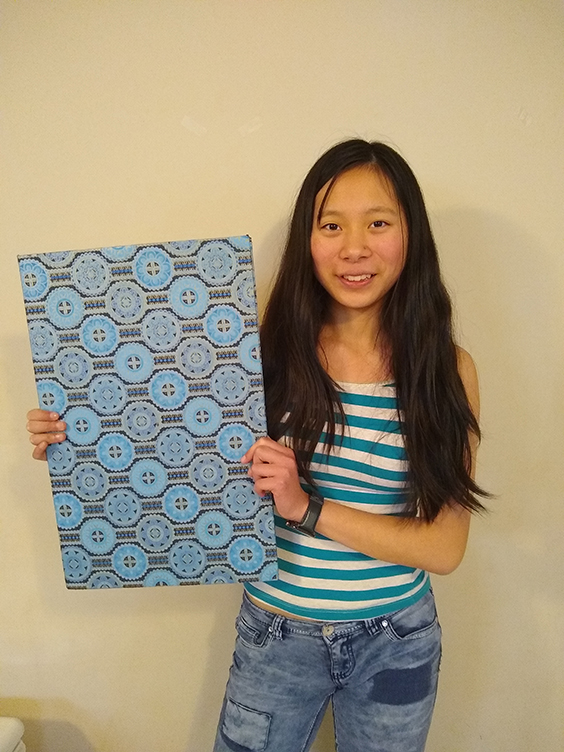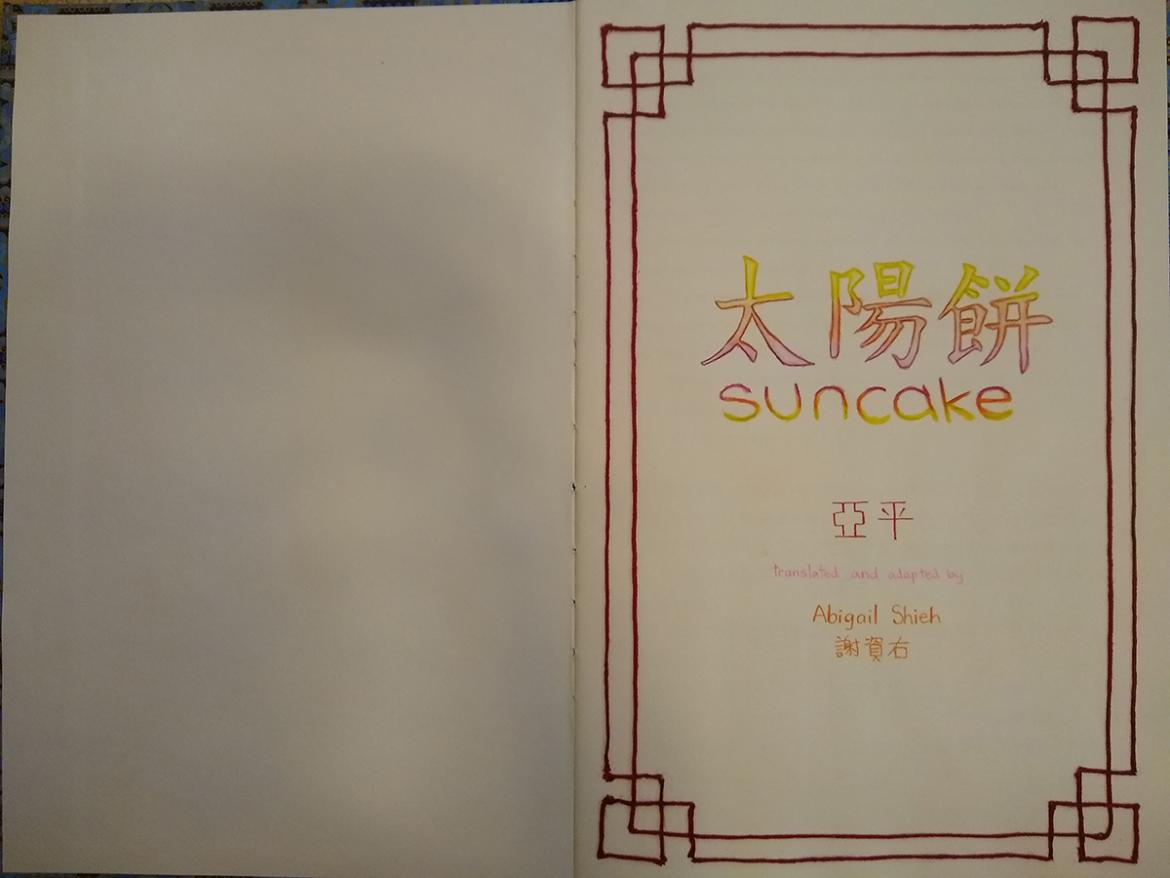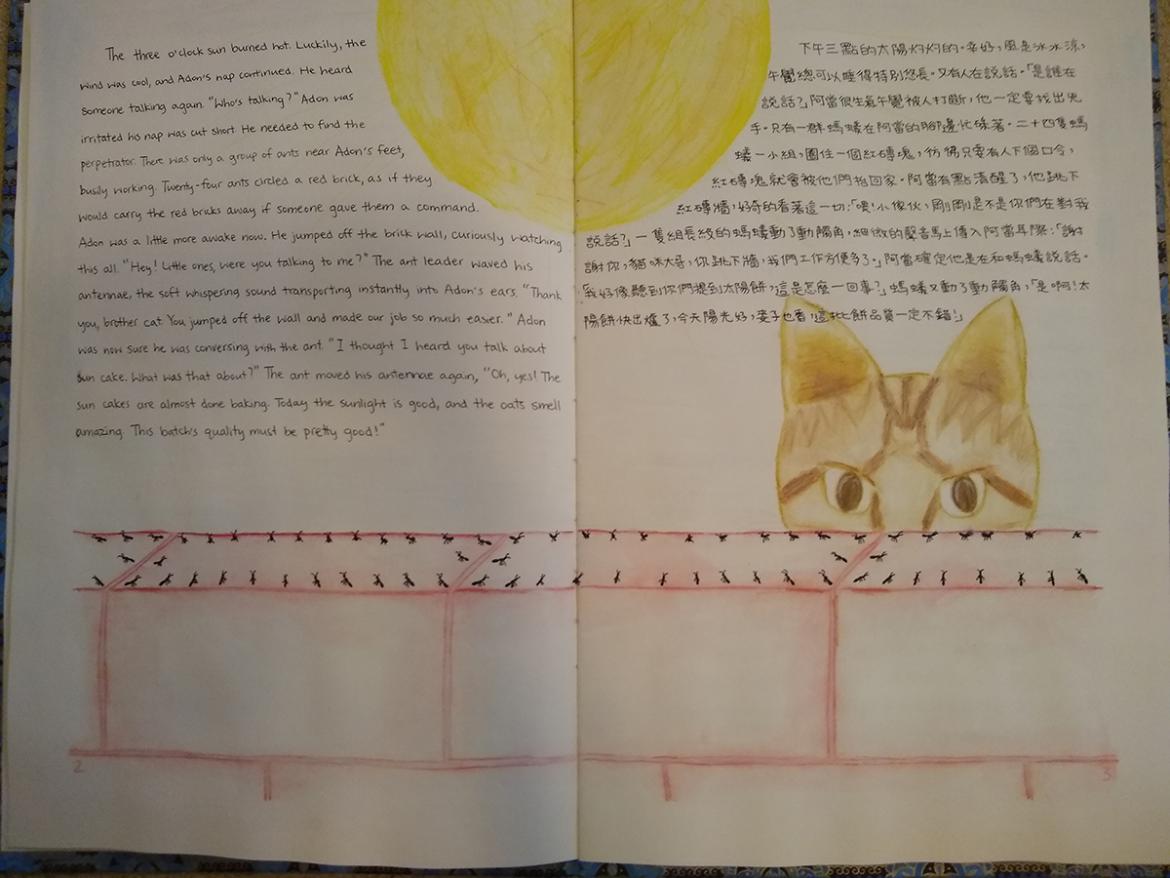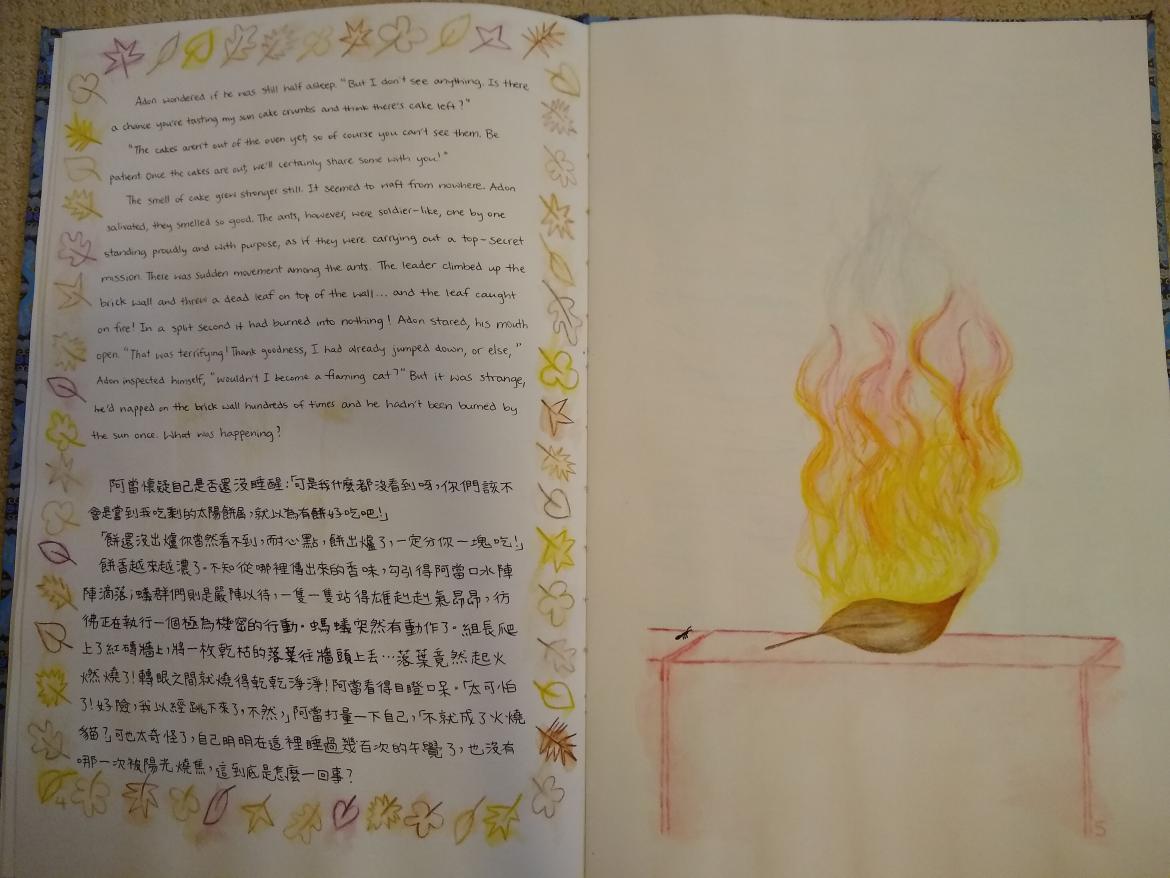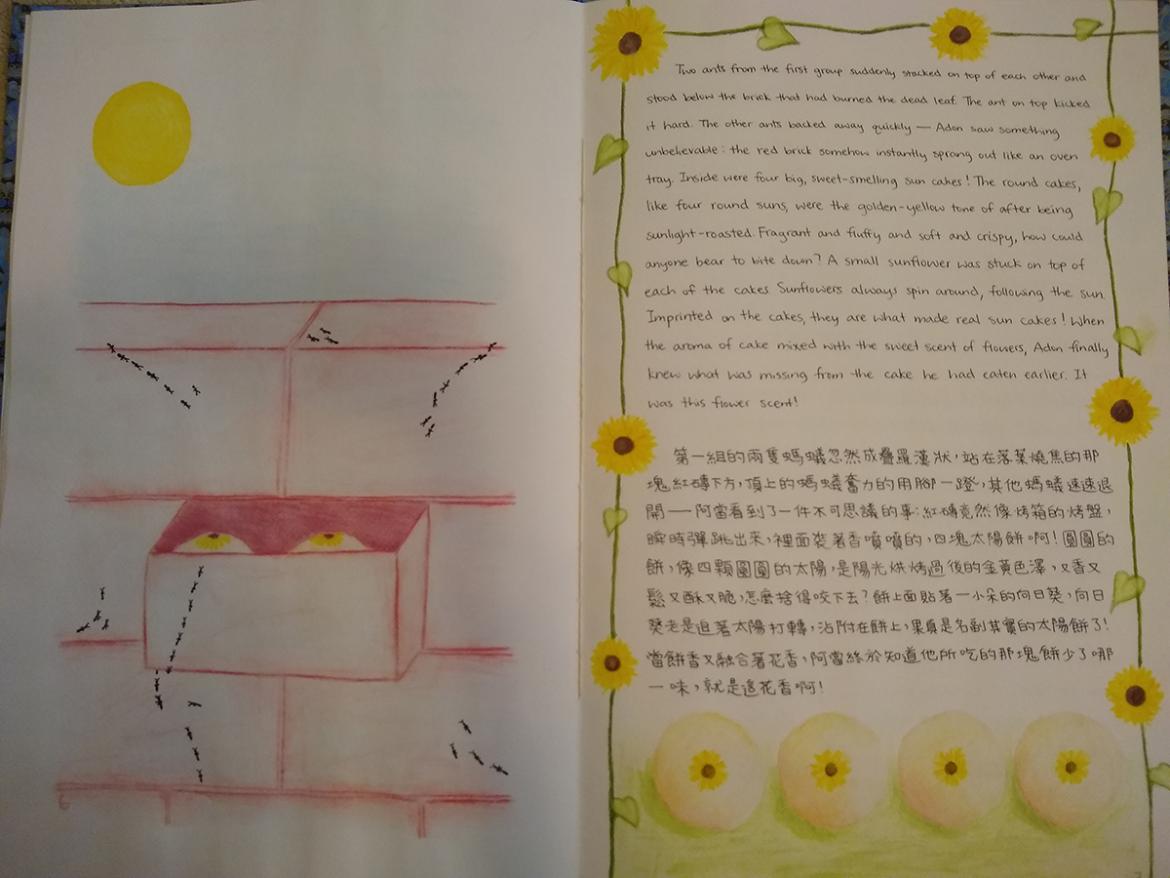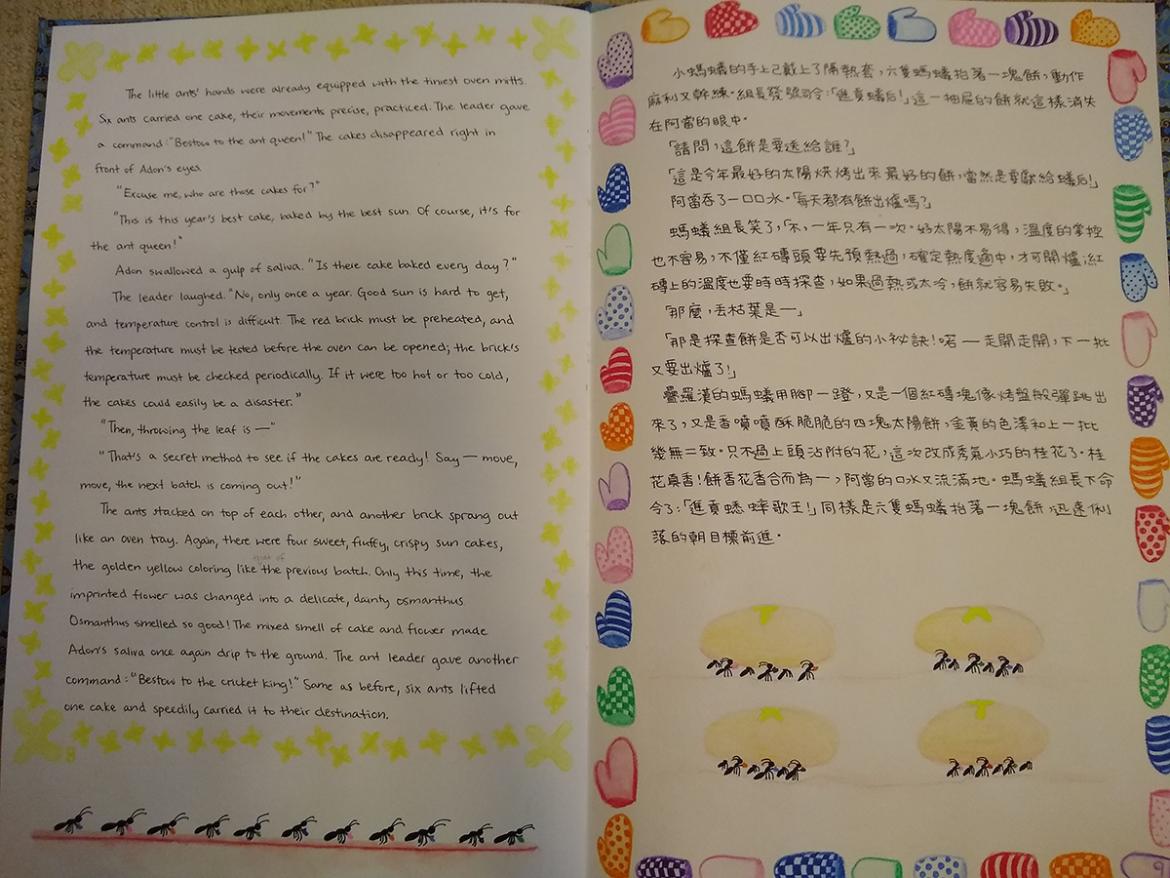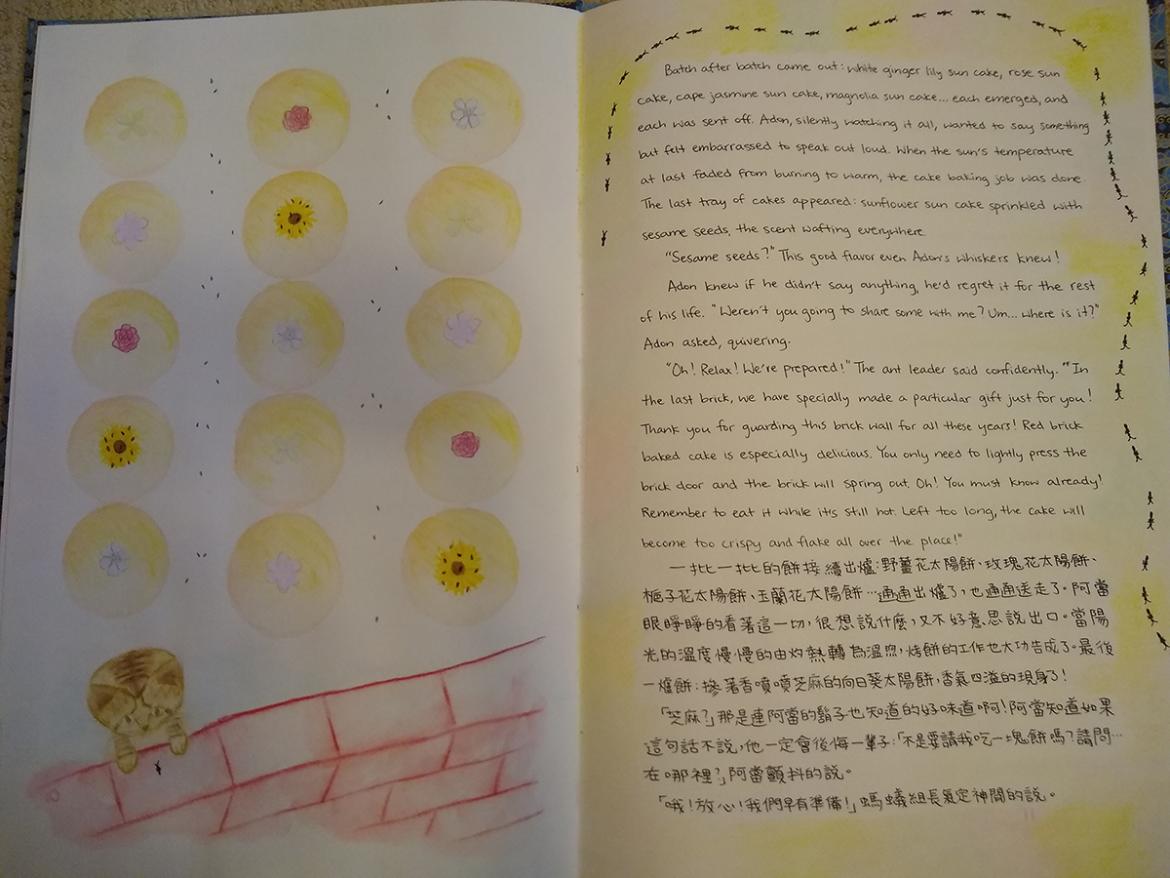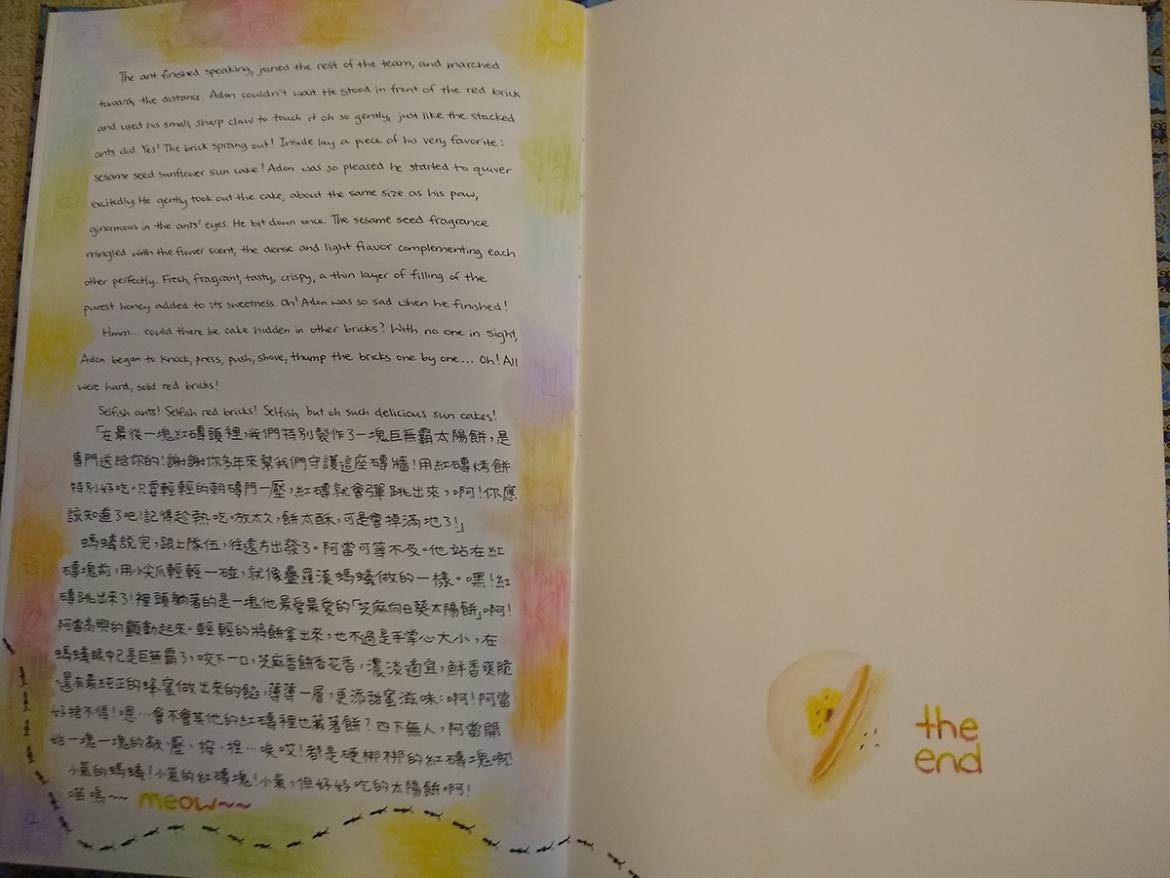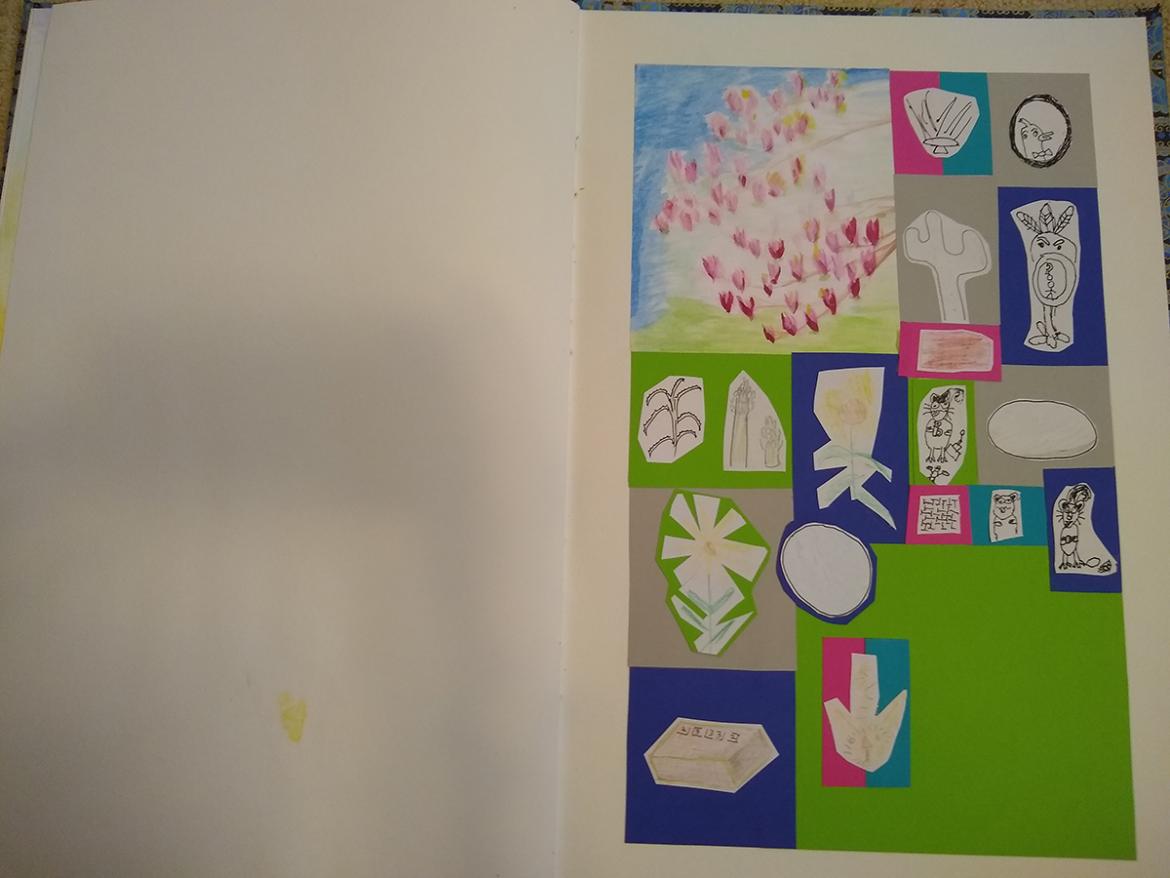Adon and Sun Cakes—Abby Self Portrait
I have written and illustrated more than fourteen children’s books since kindergarten. I made between one to three books every year, during summer vacations, and occasionally during winter or spring breaks, whenever I went back to Taiwan. To continue the tradition, my original plan for the project was to create a children’s picture book with my grandmother. She was going to fly to Baltimore at the end of March, but because of the corona virus and social distancing, she was not able to. My project was delayed until I was sure there was no way she could come. When I knew for sure my grandmother wasn’t coming, I decided to go ahead with the project on my own.
Before I start talking about the book-making process, I would like to thank Ms. Emmet. During spring break, she went to an art-supply store and bought Indian paper, specifically for my book. She also bound, glued, and stitched up the book for me, so that I could pick it up at school. That meant the physical book was finished. The story itself was not. I did not decide what to write about for a long time. I considered many stories, including folk tales I had read when I was a child. After a long time, I settled on an old folktale about Adon, a cat, who meets many ants making sun cakes. I chose this story for no reason except that I love cats and ants, and they are easy and satisfying to draw. Also, I have a sweet tooth, so I love treats, including sun cakes. I wrote the story in both Mandarin Chinese and English because I wanted to honor my Taiwanese roots, and I felt the need to practice my writing skills. I shortened the story because I did not have enough pages, and copying the whole thing would have taken too long. It is still too long as it is, the book having barely enough space for it not to feel crowded. I wrote the story before I illustrated it, and it was good that I did that, or else I would not have enough space for all the words. After I finished writing, I started the illustrations by drawing everything with pencils, because I was cautious and disliked messing up. I used Faber-Castell watercolor pencils, which was decided long ago, since they are my favorite media. Others had suggested using watercolor, but I do not like watercolor, because it is messy and, well, too watery for my taste. I also used pens and some red string on my title page. I used the string because I had already spent a lot of time pondering what to do for my title page, and I was in an experimenting mood. I found the string sitting on my desk, so I decided to glue it in a decorative design on the cover. In the very back of the book I included a collage of my family’s artwork, some of which has inspired my creativity and imagination. My family has supported me throughout my eight-grade project, and I am very thankful for them.
Through this project, I learned that once I started, I could not stop. I learned not to doubt myself, not to stress over something and just to go with it. I needed to trust my gut. I rediscovered my love of decorating and drawing. I found I enjoy art, and I like to design and embellish things with details. Planning before I got started was very important. Before I even touched a pencil to my actual book, I made a little book of regular paper, and I drew everything out in pencil and finalized it before copying it onto my actual book. Focusing on the task was crucial, too. If my mind wandered, something bad often happened. When I made a mistake, I had to learn to forgive myself, think of ways to fix it, or turn it into something better, because the mistake would not disappear if I just fumed over it and did nothing. In the end, even though it wasn’t perfect, I was proud of all my work, even the parts that I wasn’t sure would work out.
